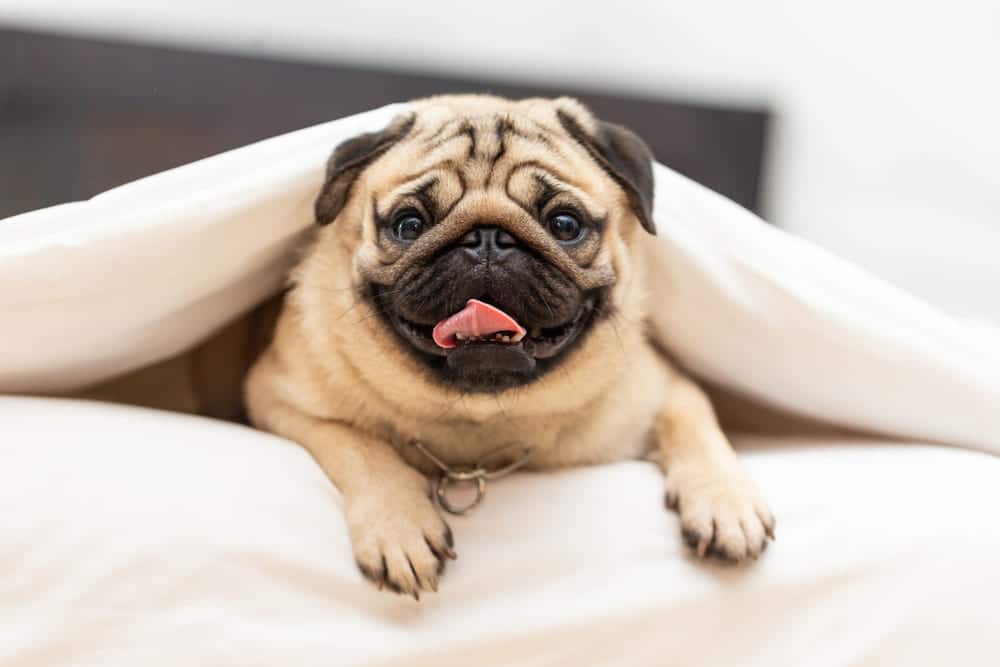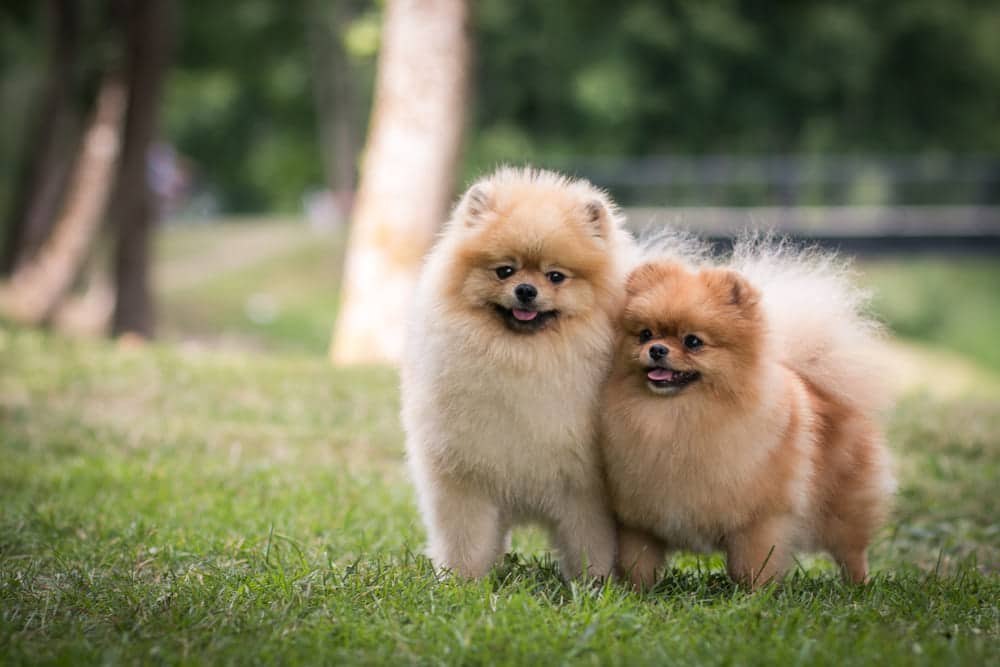Little dogs are cute funny creatures. They often act as domestic thoroughbred pets in families with children and single people, captivating with their features and lack of aggression, goodwill, and devotion.
Absolutely! Here’s a breakdown of your information on calm small dog breeds, along with key takeaways to make it easier to understand for potential owners:
Calm and Lovable: Top Small Dog Breeds for a Mellow Lifestyle
Small dogs have a big reputation for being cute, funny, and endlessly entertaining. But they can also be incredibly calm, making them perfect companions for a variety of lifestyles. Here’s a look at 11 breeds known for their gentle, less hyperactive nature:
-
Cockapoo: Super affectionate, playful, and eager to please, Cockapoos are excellent family dogs. Be aware, they need company and may bark when bored.
-
Pug: Friendly, mischievous, and surprisingly quick when they want to be, Pugs are beloved lapdogs. They are playful but ideal for families and get along with other pets. Be mindful of their tendency towards obesity.
-
Maltese: These noble little dogs are smart and deeply loyal. Adaptable to their owner’s lifestyle, they may become protective if they sense a threat.
-
Pekingese: Friendly and calm miniature dogs that love attention. They are good-natured but dislike rough treatment and may react defensively towards strangers or other dogs.
-
Havanese: Highly sociable and intelligent, these dogs are easy to train. They are friendly with everyone but need proper early socialization to avoid dominant tendencies.
-
Papillon: Known for their butterfly-like ears, Papillions are cheerful, curious, and sensitive. While devoted, these dogs need gentle handling.
-
Bichon Frise: Playful, energetic at times, but reliably calm at home. These cuddly dogs need lots of human contact to avoid boredom.
-
Pomeranian: Fluffy and charming, Pomeranians are good companions. They need regular exercise and can be vocal, especially if left alone.
-
Miniature Poodle: Highly intelligent and easily trained, these dogs crave attention. They make great companions but aren’t ideal for inexperienced owners.
-
Corgi: Cheerful and energetic, Corgis love walks and playtime. They are loyal, good with kids, and surprisingly alert despite their short stature.
-
Toy Fox Terrier: Proud and independent, these little dogs bond deeply with owners. They enjoy company but may be less tolerant of other pets.
Key Takeaways
- Not All Small Dogs Are Alike: These breeds are naturally calmer than many others, but personality varies. Consider each breed’s temperament, needs, and history.
- Early Socialization is Key: Even calm breeds need socialization to interact well with people and other animals.
- Boredom Can Lead to Trouble: Calm doesn’t mean inactive. Give your dog exercise, mental stimulation, and companionship to keep them happy.
- Choose the Right Match: Do your research and find the breed that fits best with your lifestyle and experience level.
Remember: a calm, small dog can be a wonderful, loving member of any family!
Contents
11 Calm Small Dogs:
Dogs have a lot to work with, especially those with insanely high energy levels. Thankfully, some breeds are naturally less active than others. Some of these dog breeds can make wonderful family dogs, even though they may not be perfect for everyone. If you’re looking for calmer and less hyperactive dog breeds see this below…
1. Cockapoo:
The cockapoo really seems to show emotions exactly, and it is not for nothing that this breed is considered one of the most artistic and funny dogs.
By nature, cockapoos are mega-positive, cheerful, and incredibly affectionate. They are active yet quite docile, making them ideal companion dogs for families with children.
Cockapoos do not tolerate loneliness, they can bark loudly out of boredom in the absence of the owner. It would also not be superfluous to say that in raising a cockapoo you need to control your severity, as they are very sensitive and can be offended even by a rough tone of voice. Well, it’s not surprising, no one likes
to be rude.
2. Pug:

Smart pugs love their people. They crave companionship and in return shower their owners with the same love. Playful dogs are full of tenderness and friendliness. Calm and unhurried pugs, if necessary, show miracles of mischief and speed.
The most popular breed of dog with a height of 28-32 cm and a weight of 6-8 kg.
Mini pugs are well suited for families with children and other pets, as they do not offend “their own”. This also applies to cats. Non-aggressive, but if offended, they can snap back.
The doggie can be easily taught to go to the tray, so he needs daily walking. But walking, although not enough, is necessary, because pugs are prone to obesity. Dogs can be quite active and are happy to frolic and run.
This breed is extremely affectionate and loyal. Pugs are able to become attached to their master very strongly, but at the same time, they do not ignore other members of the family. Despite the low activity, they are amenable to training. The care of this breed will be minimal, so even beginners can start it.
3. Maltese:
Maltese refers to representatives of noble breeds. Dogs are small: height at the withers up to 25 cm, weight – no more than 4 kg.
Representatives of the breed are characterized by high intellectual abilities. They have excellent memory, and intuition is well developed, so the pet seems to read the thoughts of the owner. Love for a person whom he recognizes as a master is laid down at the level of genes. The lapdog will be infinitely devoted to him and easily adapts to the character of the owner.
Sweet, friendly, affectionate Maltese will be devoted to all family members. And, despite the seeming fragility, the dog, without hesitation, will rush to the defense if he feels a threat to the owner. And it does not matter at all who it will be – a person or another animal. The Maltese will announce its intentions with a loud bark, and then use its teeth without hesitation.
4. Pekingese:
Pekingese are miniature, friendly, and calm. They love to be petted and carried around. Dogs very subtly feel the mood of the owner, so they are happy and sad with him. Pets of this breed, if separated from a loved one, may refuse food and water.
The Pekingese or Fu Ling dog loves games, walks, and is easy to train. And although the Pekingese looks good-natured, he does not like it when the boundaries of his personal space are violated.
The Pekingese do not tolerate rough treatment, it is impossible to shout at him. Otherwise, he will be offended and angry: aggressive, barking, and growling. It might even bite. The dog can show the same behavior towards other dogs or strangers. He, without hesitation, will rush to the defense of the owner if he feels a threat to him.
Good-natured with children, but can be jealous of the owner. The Pekingese doesn’t like being touched or stroked when he doesn’t want to.
5. Havanese:
Havanese is a very sociable member of the lapdog group. They are distinguished by high intellectual abilities and excellent training abilities. Height at the withers – up to 29 cm, weight – up to 5.5 kg.
A feature of the breed is the ability to mirror not only the mood but also the behavior of the owner. In terms of character, the Hawaiian Bichon is incredibly friendly. He is able to find a common language with any animals, so be prepared for the fact that your dog will be happy to play with the cat, arranging wild races around the apartment.
The breed is not inclined to dominance, but during communication with the owner, it always tries to be on the same level with it.
The Hawaiian Bichon is not naturally talkative, but the dog will definitely bark at a guest who finds himself on the threshold of an apartment. And it does not matter who it will be – a family friend or a stranger.
The Havanese are extremely intelligent and easy to train. But first, the puppy must be socialized: he must learn well who the leader of his pack is. Although the breed has no dominant inclinations, it is impossible to yield to them. Even a one-time concession will become a pattern, so you need to start raising a pet right away.
6. Papillon:
A decorative companion dog originally from France. A characteristic feature of the breed is large, but graceful ears, visually reminiscent of butterfly wings. Height at the withers – up to 28 cm, weight – up to 5 kg. Another distinguishing feature of the breed is the “smile”. The papillon’s mouth is always slightly open and the tongue is visible from the mouth.
The nature of the dogs is excellent – they are cheerful, sociable, inquisitive, and always ready to explore new and unknown. But their psyche is very delicate. Continental toy spaniels are boundlessly devoted to the owner, they cannot stand rude attitudes, and they are able to fall into a depressive state.
Papillon is a companion dog that can become a best friend. Pets of this breed are able to adapt to the living conditions of their owners. This breed of dog of small size is not suitable for families with very young children, as the dog may bite in self-defense.
7. Bichon Frise:
Bichon Frize dogs are playful and sometimes energetic, but in the home, they are usually calm. Bichons are cheerful dogs that don’t need much to be happy, but they do need a lot of human contacts to keep from getting bored.
If you are looking for small dog breeds that look like cubs, then take a closer look at the Bichon Frize breed. This miniature plush bully is really reminiscent of a clubfoot, which you definitely won’t be bored with. The breed originated in France and has enjoyed great success for many years.
For the French lapdog, an imperceptibly flowing molt is typical, and with proper care, the pet almost does not shed at all. If the coat is regularly looked after – cut and combed – then molting passes almost imperceptibly.
By nature – friendly, sociable. Bichons are great as family dogs as they love to be around lots of people.
Despite the external decorativeness, lapdogs are reliable watchmen. They will not bite a stranger, but will certainly announce the visit with a loud ringing bark.
8. Pomeranian:

If you need a small, fluffy dog, the Pomeranian breed fits this requirement perfectly. Height at the withers up to 22 cm, weight – up to 3 kg, and a beautiful furry coat.
The Spitz is a good companion dog. Active, mobile – they need daily walks in order to be able to throw out the accumulated energy. Participation in various games, as well as training classes, will provide the Pomeranians with the necessary level of mobility.
The Spitz is suitable for families where the children are already old enough and can understand that the dog has its own personal space that it can protect. Representatives of this breed do not like disrespectful attitudes and can be aggressive.
Spitz does not like to be left alone. To occupy themselves with at least something, they begin to howl.
Tray training is difficult. The dog tends to dominate and does not recognize the owner in a person, so the breed is recommended to experienced dog breeders.
9. Miniature Poodle:
The toy poodle is the smallest of the poodles. Height at the withers up to 28 cm, weight – up to 5 kg. The breed is distinguished by high intelligence: the dog can memorize many phrases and understands what the owner is saying to him.
By nature, they are active and cheerful. They become attached to the owner and are very bored, demanding constant attention. Toy poodles do not like to be alone, so they need a companion – a cat or a dog.
Toy children love, but you should not force them to play. The dog is able to get angry and use his teeth. The poodle gets along with other pets without problems: fights – even with cats – do not arise. They are even friends.
With strangers, the toy poodle is friendly. He will play with the guests, but he will never impose his communication. He is indifferent to passers-by: he will not make attempts to get to know each other, but he will not show aggression either.
10. Corgi:

Interesting short-legged dogs are the favorites of the English queen. Height at the withers 25 – 30 cm, weight up to 17 kg. Kind, determined, vigilant – it’s all about Corgis.
A typical feature is inexhaustible energy and cheerfulness. Corgis are curious, so they love to explore the territory. Dogs love long walks and active games. If you do not satisfy their needs for movement, then corgis bark a lot and for no reason spoil things.
Dogs are non-aggressive, and not nervous. But they are always ready to defend the owner, even if the enemy surpasses him in size. The hunting instinct is completely absent, so other pets can live in peace in the family. Corgi will be friendly with them.
They get along great with children. Thanks to the shepherd’s instinct, they become good nannies: corgis will never let a baby out of a certain area – a yard or a room.
Incredibly sociable and emotional. If he wants to play, he will report this by pushing with his paw or nose, and he can also grunt, sniff, grunt, and make other funny sounds.
Corgi food is not to be spoiled. Smart and cunning, they will begin to manipulate and stop obeying.
11. Toy Fox Terrier:
Toy Fox Terrier belongs to the group of decorative. Appeared as a result of crossing an Italian Greyhound and a Chihuahua. American Toy Fox Terriers are very proud, and they are also big owners who find it difficult to accept newcomers in their homes.
Another thing is if, from a young age, the toy fox grew up with a cat or another dog – then they will become real friends.
Pets are strongly attached to their owners and family members, so they are very sad when left alone for a long time. If for some reason you can’t make the time to interact with your dog, consider a breed that is less dependent on humans.
This is a family dog, boundlessly devoted to the owner and family members. He gets along well with children, but he will not allow the child to “mock” himself. Toy Fox Terrier is smart, with a light cheerful disposition. The dog is never bored. And even when he is sick, he demonstrates good nature.
The character is calm and flexible. Sometimes cocky representatives of the breed can come across. Toy Fox Terriers, despite their miniature size, can conflict with other, even very large dogs. Does not tolerate competitors and does not get along well with cats and other pets.
Conclusion:
Small dogs should not be viewed solely as cuties. Each breed has certain character traits and these features must be taken into account. So, these are the small calm dogs that are really phlegmatic and able to spend the whole day lying on a comfortable sofa.







